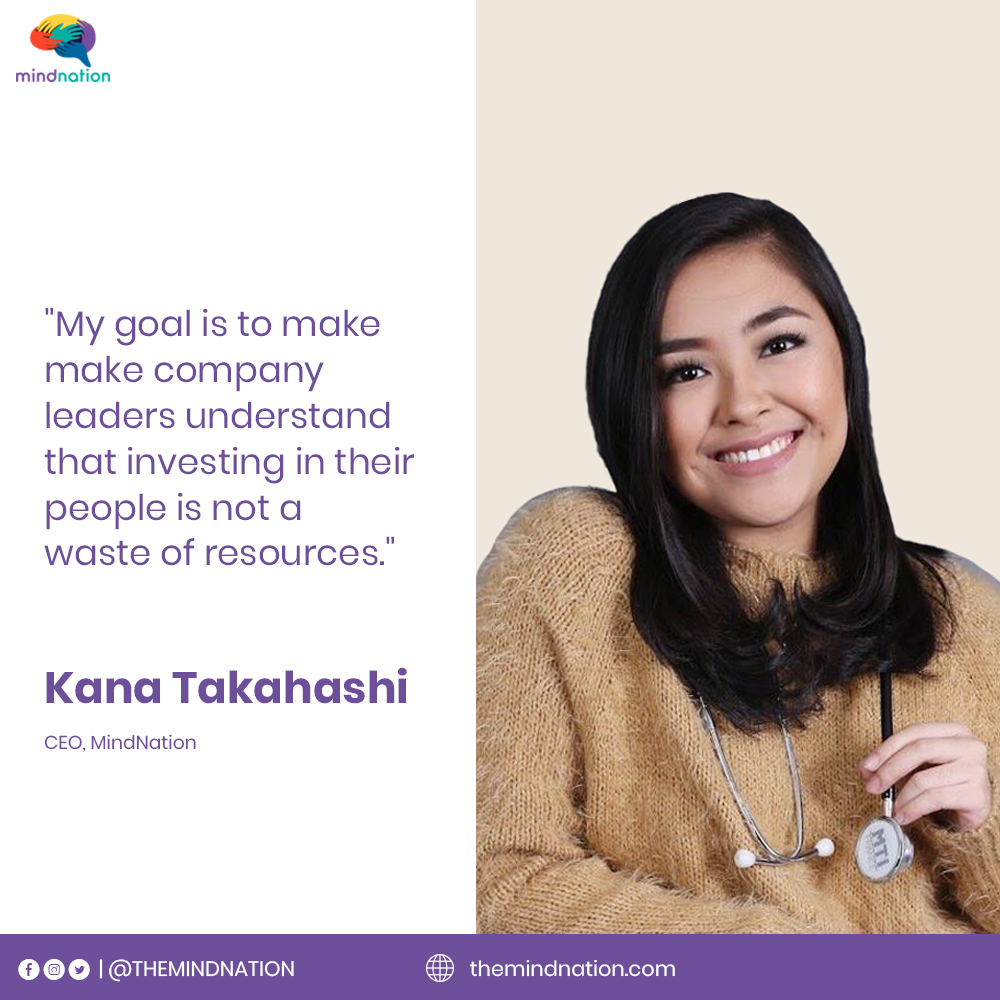Last September 15-16, MindNation had the privilege of being part of Insider’s RESHAPE 2021, the world’s largest leadership and experience summit, sharing the global stage with no less than US President Barack Obama and other top business and thought leaders.
MindNation Chief Marketing Officer Cat Triviño presided over a panel discussion about mental health in the workplace with Alisha Fernando, Head of Diversity & Inclusion for APAC of financial, software, data, and media company Bloomberg, and Kevin McGuigan, Vice-President & Managing Director for SEA of multinational conglomerate 3M.

“Even prior to the pandemic, mental health has already been a global concern, with anxiety and depresison at all time highs and even suicide being the leading cause of death in many countries,” Cat pointed out in her opening statement. For instance, a 2018 survey by the City Mental Health Alliance in Hong Kong revealed that 37% of respondents claimed to have, at some point in their lifetime, experienced mental ill health while in employment. Other research revealed that 25% of working people in Hong Kong showed levels of depression and anxiety that are 2.5 times the global average.
Not surprisingly, these numbers have risen this past year because of the psychological effects of the COVID-19 pandemic. In the Philippines, particularly, results of a Pulse Survey conducted by MindNation of over 5,000 workers found that mental health challenges are affecting 1 in every 3 employees, leading to productivity losses that cost companies up to PHP7 million per year (for every 1,000 employees).
Companies must take an active approach to mental health to combat mental health problems in the workplace. “At 3M, we strongly believe that there is no one that should struggle with mental health alone,” Kevin says. “As an employer, it is our responsibility to ensure that all of our employees feel that they are working in a safe place, that they’re comfortable to be themselves.
Here are some ways 3M and Bloomberg are building a company culture where mental health is valued, accepted, and supported:
- Keeping lines of communication open. “We encourage our managers and employees to find a way to connect with each other in ways that are not just tied to work,” Kevin explains. “When I start one-on-one meetings or group meetings, I go out of my way to spend the first few minutes just talking to the individual or the team and asking them ‘How are things going? How’s your family doing?’ This is my way of really striving to make people feel comfortable to express themselves.”
Additionally, Kevin hosts frequent roundtable sessions and town hall meetings, as well as put out regular Pulse Surveys, in order to get feedback from his team. “These build trust and show that we are able to have candid conversations about what’s working and what’s not,” he says.

- Normalizing conversations regarding mental health. “Storytelling is such a powerful tool to address [the stigma surrounding mental health],” Alisha shares. “Everytime I tell someone ‘Hey, I suffer from anxiety and I am getting professional help for it,’ they are shocked and surprised at first, but when we talk about it some more and they see that I am able to live a normal life and have a good job, they realize that having mental health challenges is not shameful or taboo. Sharing personal stories is one way we can shift the way people view mental health.”
- Providing flexible work programs. “At 3M, we have a ‘Work Your Way’ program, which not only says you can choose WHERE you want to work — 100% remote, 100% onsite, or a hybrid mode — you can also select the hours you want to work,” Kevin says. “This is because we know that people have been [affected] throughout the pandemic, and allowing them to take two hours off work to go to a therapy appointment, for example, is one way we want to make things easier for them.”
- Not viewing mental health treatment as a one-size fits all approach. “No two people experience a mental health challenge the same way; for example, some people thrive on stress and can work really well, but others don’t thrive under stress and it impacts their productivity,” Alisha shares. “So addressing mental health in the workplace comes down to knowing the employee as an individual , understanding what they need, and figuring out how we can best support them,” Alisha points out.
Bloomberg and 3M’s efforts to actively address mental health at work are paying off. “Interestingly, Bloomberg has performed remarkably well over the last 18 months of the pandemic,” she shares. “I credit that to all of the support that we have been providing so that our leaders know how to take care of our people better. Now, not only are our people thriving, our business is as well.”
MindNation uses a data-based approach to create proactive, customized, holistic health programs for your employees. Partner with us to build happier, healthier, and more productive teams. Visit www.mindnation.com now!


















